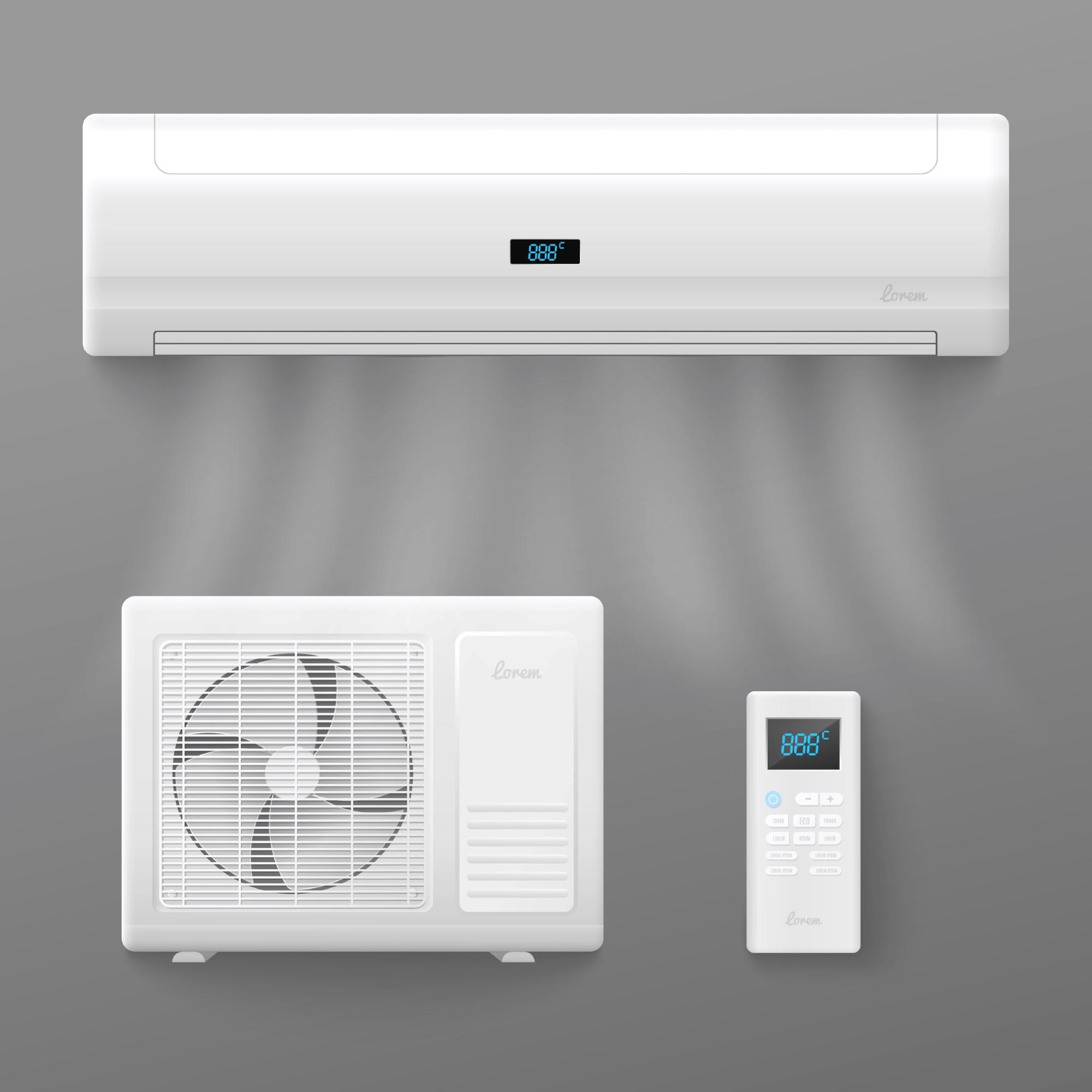Air conditioners consume a lot of energy, which has a negative impact on the environment as well as our electricity bill. Because of the growing demand for energy, increased fossil fuels are being burned, resulting in more CO2 emissions that are hazardous to the environment.

Image Credit: Sabelskaya/Shutterstock.com
Negative Effects of Air Conditioning
Most air conditioners require electricity and use a coolant that produces greenhouse gas emissions that contribute to climate change and ozone depletion. An ordinary air conditioner uses between 3000 and 5000 watts of electricity per hour, and it is estimated that by 2050, air conditioning will be responsible for nearly 25% of global warming.
CFCs and HFCs are both cooling agents that produce gas byproducts when utilized in air conditioners. These gasses is extremely dangerous in early air conditioners, and when emitted over time, they cause holes in the ozone layer. This is why air conditioning alternatives must be further utilized.
Awnings As Air Conditioning Alternatives
Surprisingly, awnings are highly efficient at keeping people's homes cool. If installed on a south-facing window, awnings can lower heat by up to 65 percent. The savings are much greater if they are installed in a west-facing window - closer to a heat reduction of 77%. In the summer, extending an awning (especially in the afternoon) will keep a lot of the heat out.
Using Passive Cooling Systems Through Architectural Designs
Passive cooling systems are a viable solution for temperature control. Through particular architectural details, heat is transferred from a building to any combination of exterior heat sinks, including the air, water, and earth.
The structure itself becomes the air conditioner by providing paths to transport heat from the interior to the exterior, using little or no electricity.
In different climates, various kinds of passive cooling systems function better. Where the air is dry, for example, evaporative cooling (that adds moisture to the air) is performed effectively, but night flushing (which uses cold night air to ventilate a structure and cool its thermal mass) is preferred in regions where the temperature range between day and night is higher.
Passive Downdraught Evaporative Cooling (PDEC)
By implementing the heat generated by water in an adiabatic process, evaporative cooling in conjunction with natural ventilation has the ability to reduce indoor ambient temperatures with moderate humidity.
Evaporative cooling technologies can be used to regulate the temperature in both outdoor and indoor areas. These devices are comprised of a duct at the top that captures outside air, and tiny droplets of freshwater are evaporated. The resultant cold dense air passively cools spaces via regulated dispersion.
The passive downdraught evaporative cooling (PDEC) method cools the air at top of a building, causing it to flow down to lower levels. Other concepts, including using an evaporative cooling pad near the intake of outdoor air, could be paired with energy from alternative means such as wind turbines.
The temperature decrease afforded by PDEC systems and structures can be up to 8 degrees Celsius if the temperature outside the building is more than 35ᵒC.
Using Phase Change Materials as Building Cooling System
The successful implementation of phase change materials (PCM) has been steadily increasing in recent years. Building cooling can be achieved by combining an innovative PCM ceiling with the use of an earth-air heat exchange (EAHE) cooling system.
The system's goal is to integrate soil's cooling capacity with PCM's energy storage abilities, resulting in better indoor thermal comfort. Buildings that employ PCM could effectively overcome overheating on hot days, lower internal air temperatures, and fix the imbalance between users' load demand and energy supply.
New Findings
The use of an evaporative cooling system has proven to be a viable alternative against the increasing essential demand for energy savings.
When compared to standard mechanical vapor compression refrigeration systems, it not only saves a lot of energy by leveraging the principle of water evaporation, but it also minimizes the greenhouse effect and safeguards the ozone layer by replacing CFCs and HCFCs gasses with water.
Significant energy and cost savings, lower peak power demand, enhanced interior air quality, life cycle cost efficiency, ease of installation, and decreased pollutant emissions are just a few of the advantages of evaporative cooling.
In a recent study published in the journal Energies, researchers from China introduced enhanced heat transport, an evaporative cooling system has been developed with a nanoporous membrane covering the surface of the wet channel. The device's working principle and the testing of nanoporous membrane evaporation were extensively researched.
The effects of a variety of operational parameters on cooling performance, such as inlet air temperature, humidity, velocity, and the effect of using the membrane, were then evaluated in trials. It was discovered that utilizing membranes can considerably increase cooling performance.
In conclusion, there are several devices that can replace air conditioning as a green energy alternative. These devices can save more power and reduce carbon dioxide emissions.
More from AZoBuild: Green Building: Where Are We Now?
References and Further Reading
Dahl, R. (2020). Cooling Concepts: Alternatives to Air Conditioning for a Warm World. Environmental Health Perspectives. Published online 1 January 2013. https://ehp.niehs.nih.gov/doi/10.1289/ehp.121-a18
Lu, S., et al. (2020). Performance Analysis of PCM Ceiling Coupling with Earth-Air Heat Exchanger for Building Cooling. Materials. Published: 27 June 2020 https://www.mdpi.com/1996-1944/13/13/2890
Lv, J., et al. (2022). Experimental Study on the Performance of a Dew-Point Evaporative Cooling System with a Nanoporous Membrane. Energies. Published: 2 April 2022. https://www.mdpi.com/1996-1073/15/7/2592
Disclaimer: The views expressed here are those of the author expressed in their private capacity and do not necessarily represent the views of AZoM.com Limited T/A AZoNetwork the owner and operator of this website. This disclaimer forms part of the Terms and conditions of use of this website.